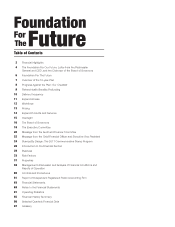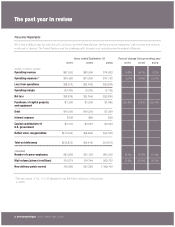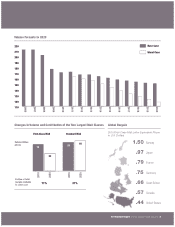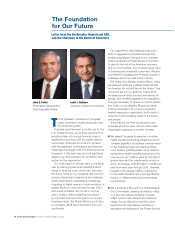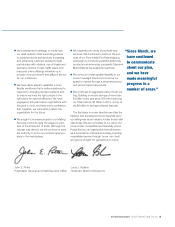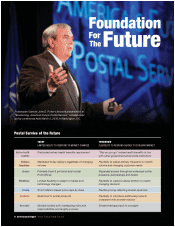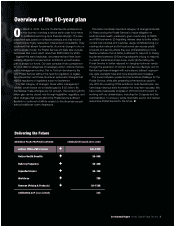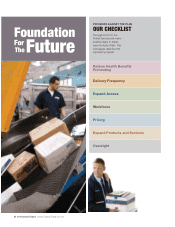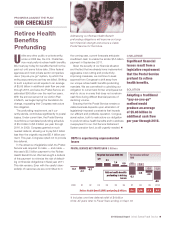US Postal Service 2010 Annual Report Download - page 6
Download and view the complete annual report
Please find page 6 of the 2010 US Postal Service annual report below. You can navigate through the pages in the report by either clicking on the pages listed below, or by using the keyword search tool below to find specific information within the annual report.
4 2010 Annual Report United States Postal Service
Letter from the Postmaster General and CEO,
and the Chairman of the Board of Governors
John E. Potter
Postmaster General and
Chief Executive Offi cer
Louis J. Giuliano
Chairman, Board of Governors
To the President, members of Congress,
postal customers, postal employees, and
the American people:
This past year has been a pivotal one for the
U.S. Postal Service, as we have set about the
ambitious task of turning a fi nancial crisis of
signifi cant proportions into an equally sizable
opportunity. While we continued to contend
with the signifi cant marketplace and fi nancial
challenges that began with the 2008 economic
recession, in this past year we took signifi cant
steps to lay the foundation for an historic redi-
rection for the organization.
Our work began in earnest early in the fi scal
year by asking fundamental questions about
trends in America’s use of the mail, and what
the future holds for our business. We commis-
sioned independent projections and analyses,
which described a marketplace increasingly
migrating to digital means of communication, a
steady decline in mail volumes through 2020,
and a less profi table mix of mail in coming
years. Indeed, without signifi cant productiv-
ity improvements and changes to our current
business model, the Postal Service could face
a cumulative $238 billion shortfall in the com-
ing decade.
The Foundation
for Our Future
Our response to this challenge was to set
forth an aggressive and balanced plan that
envisions signifi cant changes to our business
model, enables the Postal Service to continue
to play its vital role in the American economy,
and our communities, and to deliver great value
to business and residential customers. We also
committed to engaging the American people in
a dialogue about our plan and our future.
We began this dialogue in early March, when
we released: Ensuring a Viable Postal Service
for America: An Action Plan for the Future. This
document set out our goals for cost-cutting,
increased productivity, product and service of-
ferings, and identifi ed legislative and regulatory
changes necessary to ensure our future viability
and a return to profi tability. Most importantly,
it set the foundation for a more competitive,
market-responsive organization, better able to
meet the evolving mailing needs of the Ameri-
can people.
Since March, we have continued to com-
municate about our plan, and we have made
meaningful progress in a number of areas.
■ We asked Congress to examine our retiree
health benefi ts prefunding obligations and to
consider legislation to address overpayments
to the Postal Service’s Civil Service Retire-
ment System (CSRS) pension fund. Restruc-
turing retiree health benefi ts payments to the
“pay-as-you-go” method used by the rest of
government and the private sector would re-
sult in an average of $5.65 billion in additional
cash fl ow each year through 2016. Likewise,
transfer of the excess CSRS contributions
to the health benefi ts fund could signifi cantly
reduce, or offset entirely, future prefunding
requirements.
■ We submitted a fi ling with the Postal Regula-
tory Commission, seeking an advisory ruling
on a fi ve-day delivery schedule to better
refl ect current mail volumes and customer
usage. Survey data show that the public
supports a fi ve-day delivery schedule to
strengthen the fi nances of the Postal Service.



